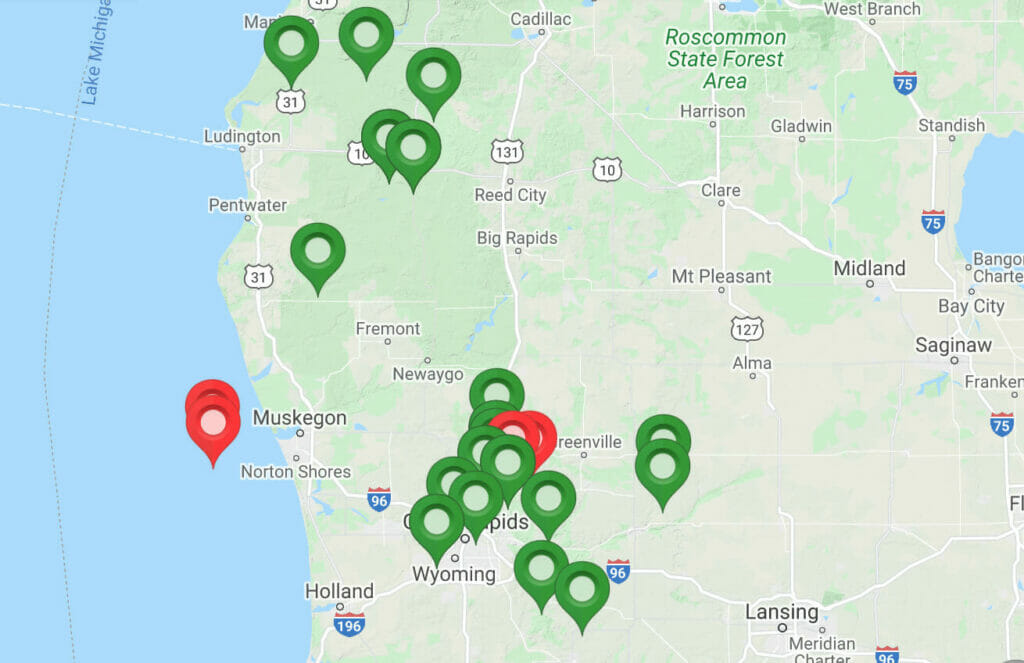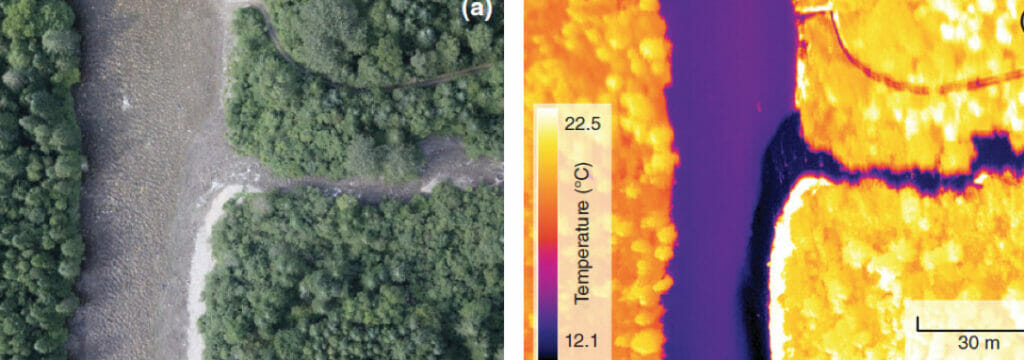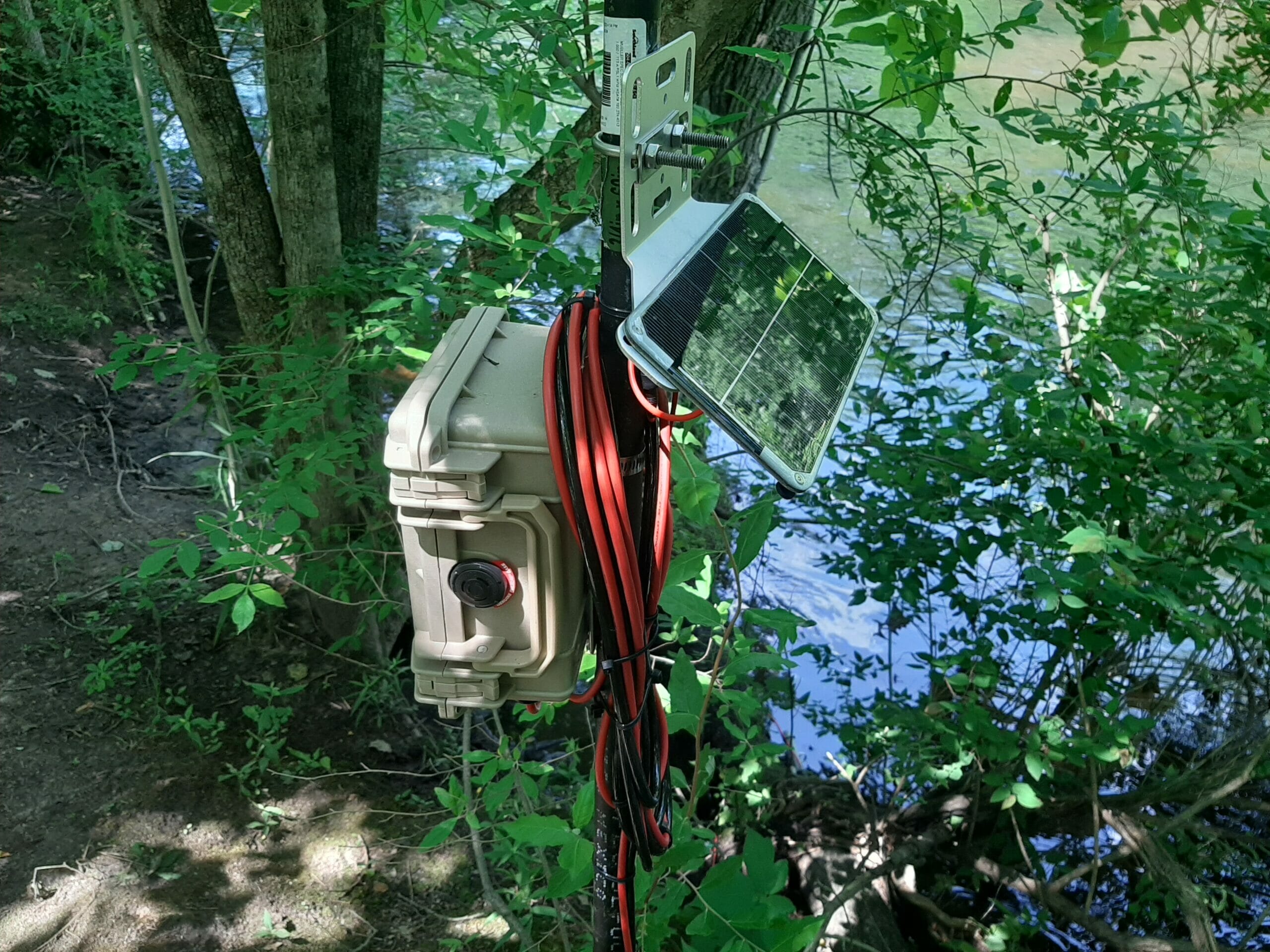By Jake Lemon
Trout Unlimited’s team in the Great Lakes region continues to expand on its ambitious science-related initiatives, which are critical in informing protection and restoration projects in the region.
TU continues to support our chapters and partners in enhancing their water monitoring activities with the Mayfly sensor station, a low-cost real-time stream monitoring technology. Developed by Stroud Water Research Center, the Mayfly sensor station is an easy-to-use water monitoring station designed to collect continuous data. Data are then uploaded to an online database via cellular signal for real-time access to current stream conditions.
TU staff provide training and technical support to groups interested in collecting continuous real-time data such as stream temperature, depth, conductivity and turbidity. In 2020 TU developed training designed to provide volunteer groups and other partners with the necessary skills to maintain their sensor station, conduct regular quality checks and to understand their data. The training was then adapted to be delivered virtually.
TU and our partner deployed 15 Mayfly sensor stations in 2020, bringing the total number of stations in Michigan to 23. While Michigan has been the hub of activity on this project, other regions are taking notice, and the effort has spread to New York, Tennessee and Oregon.

Working with the U.S. Forest Service, TU is evaluating coldwater habitat suitability and species distribution in the Huron-Manistee National Forest.
In 2020 TU staff deployed 61 temperature loggers in the White River, Big South Branch Pere Marquette River and Little Manistee River watersheds. Thirty-nine environmental DNA samples were taken to evaluate the distribution of brook trout and other coldwater species in the White River and Big South Branch watersheds. Fish community surveys were completed in five watersheds to evaluate the impact of planned fish passage projects.
This information will be used to identify and prioritize the efforts of TU, the Forest Service and our partners in these watersheds. These data will also be integrated into a Great Lakes basin-wide model being developed by the US Forest Service Northern Research Station, University of Minnesota, and Colorado State University that will evaluate how land cover, land use, disturbance and associated characteristics that impact coldwater habitat and species distribution.
In 2021 TU is poised to expand the capabilities of the Mayfly Sensor Station technology, adding new sensor types, such as dissolved oxygen and ultrasonic sensor to measure stream depth, and developing the capability to deploy station in areas without cellular signal. We will also continue working with TU chapters and other partners to maintain existing stations and to deploy additional stations.
We will continue working with the Forest Service to evaluate coldwater habitat suitability and species distribution in watersheds within the HMNF.

TU will be expanding our capacity to conduct fish community surveys and evaluate the impacts of restoration efforts in partnership with the National Fish and Wildlife Foundation.
Also in 2021, TU is launching a new project involving mapping stream temperature in fine-scale using thermal cameras mounted on unmanned aerial vehicles, also known as drones. This fine-scale mapping will enable us to find seeps, springs and tributaries providing thermal refugia to coldwater species, enhancing our ability to prioritize and site projects.
Jake Lemon is Trout Unlimited’s eastern angler science coordinator. He is based in Michigan and can be reached at jacob.lemon@tu.org.



